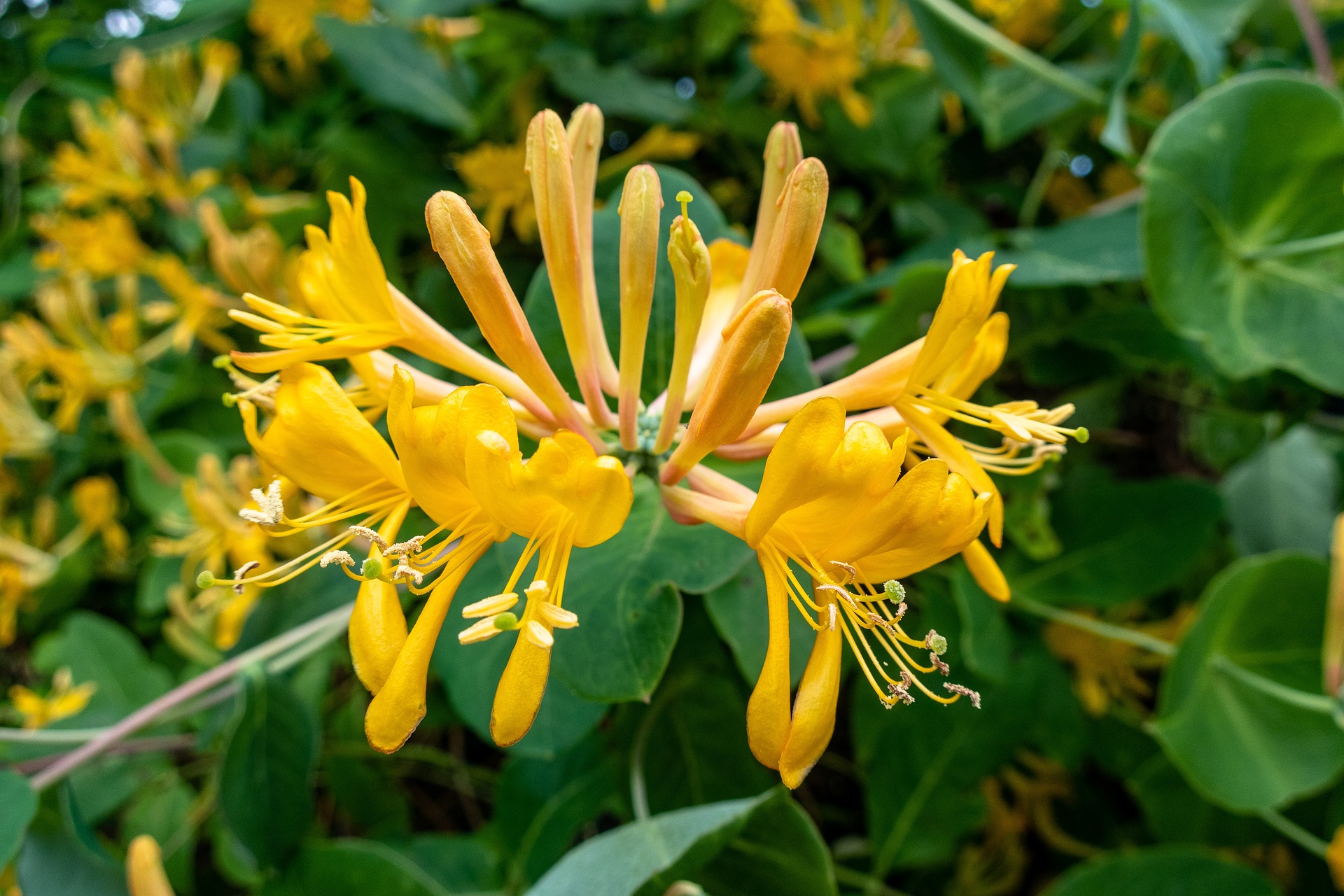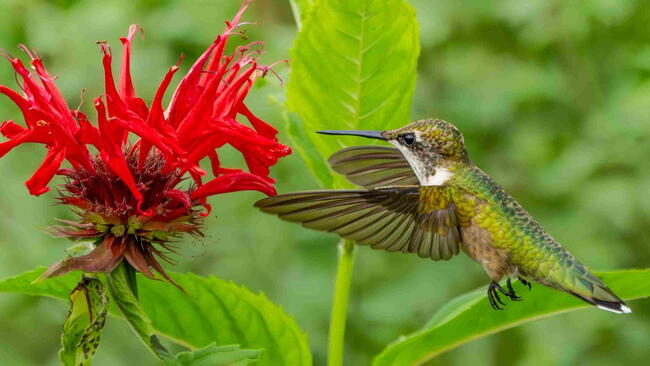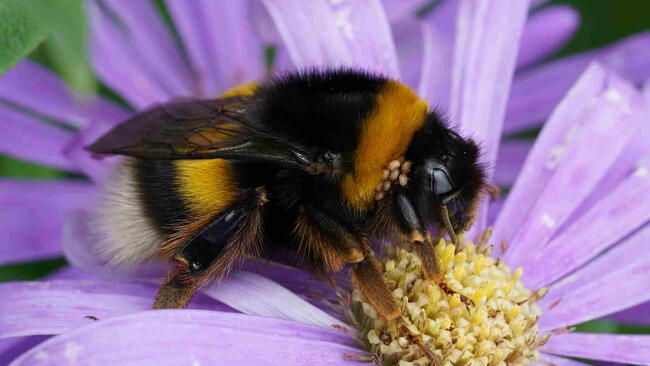
Caption
Coral honeysuckle (Lonicera sempervirens)
How to Grow Honeysuckle for Scent, Shade, and Hummingbirds
Read Next
Types
- Coral honeysuckle (L. sempervirens) is a native species. Its large, 10-20 foot long vines are perfect to create a climbing and flowering display.
- ‘Major Wheeler’ (L. sempervirens) has a long blooming period and gorgeous red flowers with yellow-orange centers.
- American honeysuckle (L. canadensis) is a shrub-formed bush honeysuckle with pale, cream-colored flowers native to the New England area.
- Goldflame Honeysuckle (L. x heckrottii) is a fragrant bloomer that makes a stunning display of purple, pink, and yellow on a trellis or arbor.
Gardening Products
More Like This
Hi Elaine,
You do want to prune your honeysuckle vine, and not necessarily to stimulate flower growth, but to keep it from becoming a thick, entangled mess, which can limit the flower production because your vine is not able to get the proper sunlight and air flow it needs.
Depending on when your vine flowers, you can prune it immediately after flowering for both shape and to keep it tidy. Thinning stems and branches (and removing dead or diseased portions) will help promote new growth. Most early flowering honeysuckle vine flowers on the previous year's growth so it is important to prune as soon after flowering as possible to avoid impacting the following year's flowers.
If your vine eventually gets out of control, you can do a hard prune during the dormant season—just remember that will mean you will not get any flowers in the coming year.
Hi Suzann,
Sorry to hear about your honeysuckle. Bleach can be very harmful to plants and could very well be the reason that your honeysuckle is suffering.
There are also other factors that can lead to a honeysuckle's decline. You mentioned that you watered every night, but well established honeysuckle plants actually prefer to dry out between waterings and do not like very damp conditions. Too much water will create issues for your plant. Over-fertilizing can also prevent a honeysuckle from setting flowers.
- « Previous
- 1
- 2
- …
- 10
- Next »












Comments